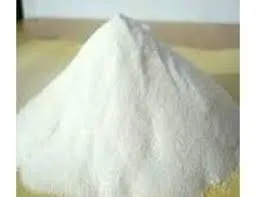
Nov . 08, 2024 10:09 Back to list
Comparing HEC and HPMC in Pharmaceutical Applications for Enhanced Performance and Stability
Comparing HEC and HPMC Properties, Applications, and Differences
Hydroxyethyl cellulose (HEC) and hydroxypropyl methylcellulose (HPMC) are both water-soluble cellulose derivatives widely utilized in various industries. While they share some similarities due to their cellulose origin, they possess distinct properties and applications that make them suitable for different purposes. This article aims to delve into the characteristics, uses, and implications of HEC versus HPMC, helping to illuminate the choice between these two compounds in practical applications.
Chemical Structure and Properties
HEC is derived from cellulose through the etherification process, where ethylene oxide replaces some of the hydroxyl groups in cellulose. This modification enhances its solubility in cold water and provides a thickening effect, making it a valuable ingredient in numerous cosmetic and pharmaceutical formulations. HEC appears as a white, odorless powder that does not revert to its original form after dissolution, allowing it to provide consistent viscosity and texture in solutions.
On the other hand, HPMC is produced through a more complex modification of cellulose, involving a combination of hydroxypropyl and methoxy groups being introduced. This chemical alteration endows HPMC with unique thermal properties, enabling it to dissolve in hot and cold water. HPMC is also non-ionic, making it compatible with a wide range of other materials, further broadening its applicability.
Both HEC and HPMC exhibit excellent water retention properties, but their viscosities are influenced differently by concentration and temperature. HEC is known to provide better thickening ability at low concentrations, while HPMC’s viscosity dramatically increases with rising temperatures, giving it a unique edge in thermal gelation applications.
Applications
The applications of HEC and HPMC span numerous fields
1. Pharmaceutical Industry Both HEC and HPMC are utilized extensively in drug formulation. HEC is primarily employed as a binder, thickener, and stabilizer in hydrophobic drug formulations. It enhances the flow properties of powders and granules, ensuring uniformity and consistency. HPMC serves a dual purpose; it acts not only as a binder but also as a controlled-release agent. Its ability to swell in contact with water allows it to slow down the release of active ingredients, making it ideal for sustained-release formulations.
hec vs hpmc

2. Cosmetics and Personal Care In the cosmetic industry, HEC is favored for its thickening and film-forming properties in products like shampoos, conditioners, and skin creams. HPMC is also common in cosmetic formulations but is particularly valued for its emulsifying properties, facilitating the stable mixing of oil and water in creams and lotions.
3. Construction HEC plays a crucial role in the construction sector as an additive for cement and plaster, enhancing workability and water retention. HPMC is similarly valuable in this field, particularly in tile adhesives and mortar, where it improves adhesion and flexibility.
4. Food Industry HPMC has gained attention for its use as a food additive, acting as a thickener and emulsifier. It is often included in gluten-free products to enhance texture, whereas HEC is less commonly used in food applications due to regulatory constraints.
Differences and Considerations
When selecting between HEC and HPMC, several factors come into play. The desired viscosity, temperature stability, and compatibility with other ingredients are all crucial considerations. HEC tends to be more straightforward in applications requiring cold water solubility and thickening properties. In contrast, HPMC offers greater versatility in thermal processes and improved compatibility in formulations.
Furthermore, regulatory aspects must be acknowledged, particularly in food and pharmaceutical applications. HPMC has a broader acceptance as a food additive compared to HEC, which might limit its use in edible products.
Conclusion
In summary, both HEC and HPMC are essential cellulose derivatives with distinct properties that make them valuable across various industries. While they share similarities in their roles as thickening agents and stabilizers, their differences in chemical composition lead to differing applications and functionalities. Understanding these nuances allows manufacturers and formulators to choose the right material for their specific needs, ultimately influencing the efficacy and quality of their products. As advancements in technology continue to evolve, the scope of applications for both HEC and HPMC is likely to expand further, driving innovation in countless fields.
-
Versatile Hpmc Uses in Different Industries
NewsJun.19,2025
-
Redispersible Powder's Role in Enhancing Durability of Construction Products
NewsJun.19,2025
-
Hydroxyethyl Cellulose Applications Driving Green Industrial Processes
NewsJun.19,2025
-
Exploring Different Redispersible Polymer Powder
NewsJun.19,2025
-
Choosing the Right Mortar Bonding Agent
NewsJun.19,2025
-
Applications and Significance of China Hpmc in Modern Industries
NewsJun.19,2025







